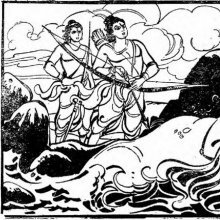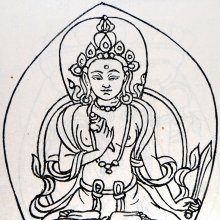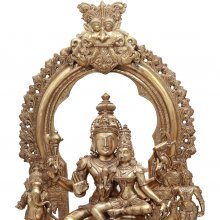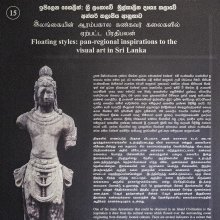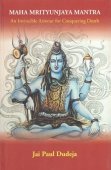Wave: 1 definition
Introduction:
Wave means something in Hinduism, Sanskrit. If you want to know the exact meaning, history, etymology or English translation of this term then check out the descriptions on this page. Add your comment or reference to a book if you want to contribute to this summary article.
Images (photo gallery)
In Hinduism
Gitashastra (science of music)
Source: Shodhganga: Elements of Art and Architecture in the Trtiyakhanda of the Visnudharmottarapurana (gita)The Wave (of sound) is believed as śabdabrahma, according to the Vākyapadīya.—In the Maitreyopaniṣad, the knowledge of śabdabrahma is considered as the ultimate way of realizing the supreme spirit—“śabdabrahmaṇi niṣṇātaḥ paraṃ brahmādhigacchati”.—Śabda or Nāda i.e., sound is the soul of vocal Music. In ancient time, the Ṛṣis have the power to realise the existence of natural forces and united themselves with the natural powers.
Gitashastra (गीतशास्त्र, gītaśāstra) refers to the ancient Indian science of Music (gita or samgita), which is traditionally divided in Vocal music, Instrumental music and Dance (under the jurisdiction of music). The different elements and technical terms are explained in a wide range of (often Sanskrit) literature.
See also (Relevant definitions)
Starts with: Waveleaved xysmalobium, Waveless.
Query error!
Full-text (+880): Taranga, Urmi, Lahari, Vici, Ullola, Kallola, Jalataranga, Uttaranga, Tarangita, Bhanga, Samudravela, Bhandi, Jalalata, Utkalika, Lahara, Bhangi, Bhangibhakti, Gangalahari, Avici, Jalakaranka.
Relevant text
Search found 349 books and stories containing Wave, Waves, The waves; (plurals include: Waves, Waveses, The waveses). You can also click to the full overview containing English textual excerpts. Below are direct links for the most relevant articles:
Chaitanya Bhagavata (by Bhumipati Dāsa)
Verse 3.3.48 < [Chapter 3 - Mahāprabhu’s Deliverance of Sarvabhauma, Exhibition of His Six-armed Form, and Journey to Bengal]
Verse 3.3.51 < [Chapter 3 - Mahāprabhu’s Deliverance of Sarvabhauma, Exhibition of His Six-armed Form, and Journey to Bengal]
Verse 3.3.208 < [Chapter 3 - Mahāprabhu’s Deliverance of Sarvabhauma, Exhibition of His Six-armed Form, and Journey to Bengal]
Shurangama Sutra (with commentary) (English) (by Hsuan Hua)
The skandha of activity < [Chapter 2 - The Five Skandhas]
The characteristics of the demons of the formations skandha < [Chapter 5 - The Formations Skandha]
The Tathagata shows that the body changes < [Chapter 1 - The Seeing Nature]
Yoga-sutras (Vedanta Commentaries)
Sūtra 15 < [Part I - Yoga and its Aims]
Sūtra 2 < [Part I - Yoga and its Aims]
Sūtras 3-5 < [Part I - Yoga and its Aims]
Nyaya-Vaisheshika categories (Study) (by Diptimani Goswami)
Qualities (15): Śabda (Sound) < [Chapter 4 - Quality and Action]
Cidgaganacandrika (study) (by S. Mahalakshmi)
Verse 222-223 [Śakti as Wave in the Ocean of Prakāśa Śiva] < [Chapter 4 - Fourth Vimarśa]
Verse 43 [Udyama and Mahodaya] < [Chapter 2 - Second Vimarśa]
Verse 35 [Trinkets of Kāli’s anklets] < [Chapter 2 - Second Vimarśa]
Related products
(+3 more products available)
